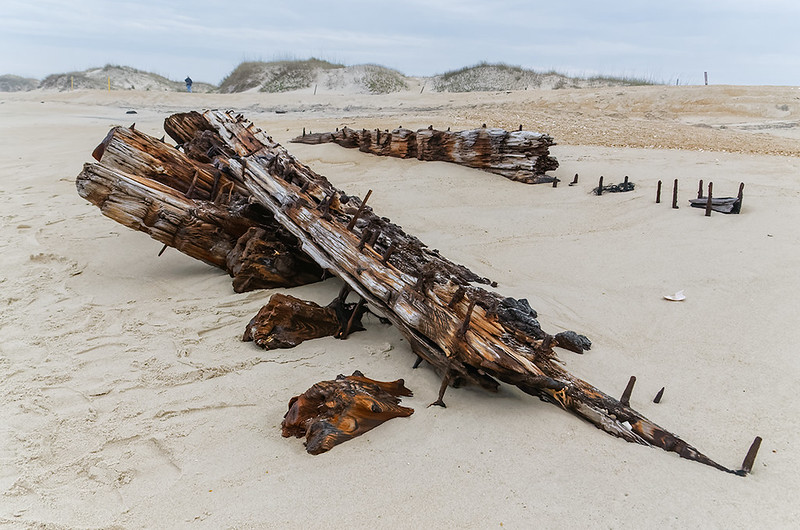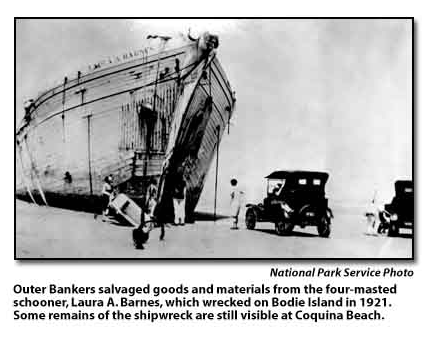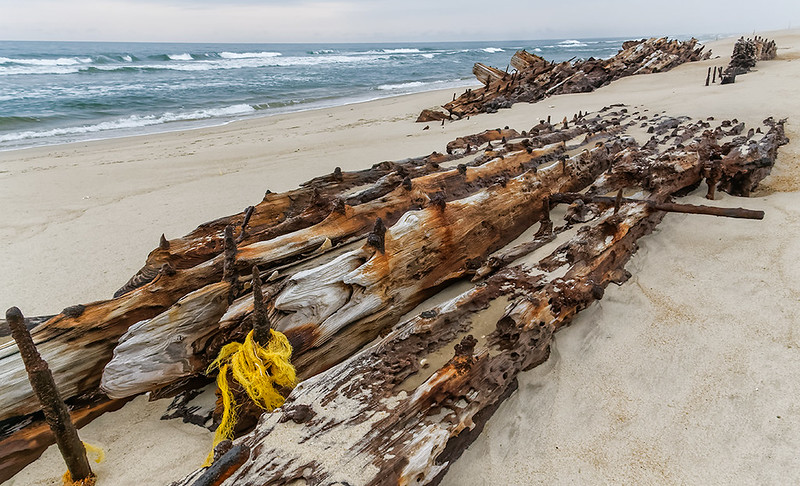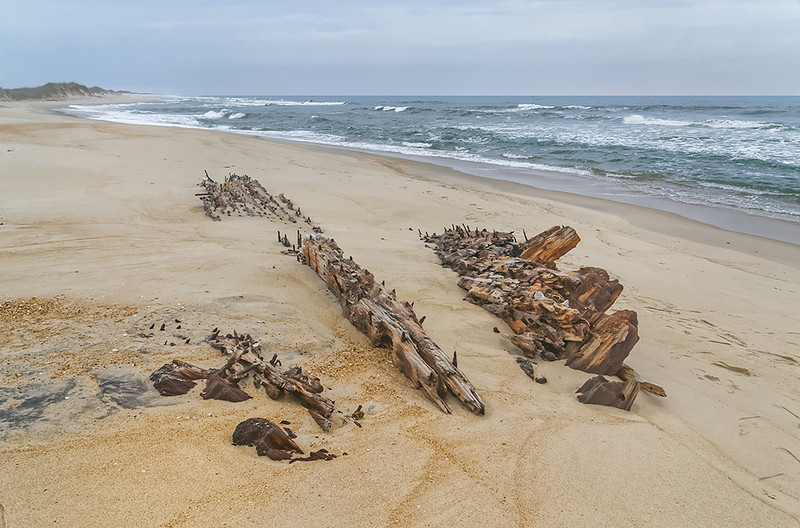The listing in the July 1921 issue of Marine Review about the Laura A. Barnes is a single line reading “…May 28, grounded, Bodie Island, total loss.”
The Laura A. Barnes is still there, the skeletal remains of the four-masted schooner a part of the allure of Coquina Beach in South Nags Head.

Built by the R.L. Bean Shipyard in Camden, Maine, the Laura A. Barnes was almost 180’ in length and could carry 530 tons of cargo.
Owner/Captain Charles Barnes named the ship for his wife, Laura Annie Barnes and when she was launched on March 15, 1918, she was one of 20 four-masted schooners that the R.L. Bean Shipyard built over a 20 month period that is a record that still stands for construction of ocean-going schooners.

Although a wooden cargo ship, when launched, according to reports of the day, she boasted many of the most recent refinements in commercial shipping. Certainly, the fact that she was a four-masted schooner but only needed a crew of eight would indicate that some of the most recent innovations in sail design had been built into her.
Intended to carry cargo along the profitable coastal run along the Atlantic seaboard, the ship had two years on the sea before her fateful journey in May of 1921.
The record is a little unclear about that last trip along the coast.
The Laura A. Barnes was based out of Marblehead, Massachusetts where the Barnes family lived. She set sail in late May for Georgetown, South Carolina, but the ship’s manifest did not list any cargo—something that is somewhat odd. The ship was probably headed to South Carolina to pick up cargo, but shipowners very rarely sailed with an empty hold.
May 31, 1921 was a fog-shrouded stormy night. At some point in the overnight hours, pushed by high winds, buffeted by the seas and unable to see where the ship was headed in the fog, the Laura A. Barnes ran aground on Bodie Island.

The Coast Guard stations along the Outer Banks included foot patrols along the beach during the 1920s and it was surfman H.N. Etheridge who first saw the ship hard aground on Bodie Island.
Surfmen from the Bodie Island and Nags Head Coast Guard stations participated in the rescue, using a fireable “beach apparatus,” probably a reference to a Lyle Gun.
Lyle Guns were standard issue rescue equipment for all Lifesaving and Coast Guard Stations from the 1880s until 1952. A line was attached to a 19-pound projectile that the gun would fire to a ship in distress. The line was attached to the ship and became part of a lifeline to get personnel off the ship in distress.
All eight crewmen were rescued from the ship, but the ship was a total loss.
According to some sources, Captain Barnes was able to sell the contents of the ship to “wreckers” for $80,000 who probably removed everything of value from the interior.

The ship originally ran aground about one mile south of its current location at Coquina Beach. In 1983 the National Park Service moved the wreck to its current site. At times the wreck is easily seen. At other times, sand and tides cover it almost entirely.
